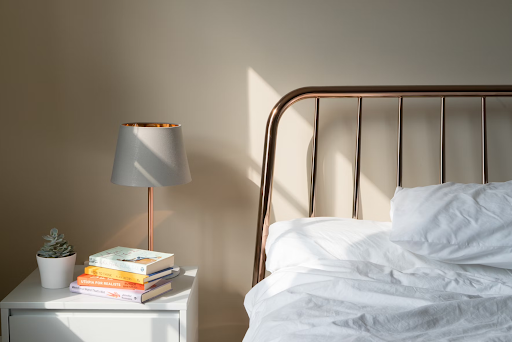Is Napping Good For You

Author: Jonathan Warren
After a stressful or hectic morning, grabbing an hour to catch up on some afternoon z’s can sometimes be an attractive proposition. We all love sleep, and the temptation to have a little nap during the day is always strong – but is it a good idea?
Here, we delve into the health aspects of napping, before analysing the benefits and considerations of a quick afternoon sleep.
Is Napping Good for Your Health?
Naps are something we’re all familiar with, no matter where we are in the world. The National Sleep Foundation found that 34% of adults admitted to napping. Given its popularity, a body of scientific evidence has accrued that looks at the health impacts on those that choose to take a quick nap every now and then.
Napping can feel like a negative activity. You might feel like you’re being lazy or unproductive for getting your head down, but the science suggests that you shouldn’t feel this way. In fact, napping is likely to lead to some positive performance-related benefits, provided you go about it in the right way.
The Benefits of Napping and Power Naps
There are many observed benefits of napping. Here’s a few of the main positives, plus some of the scientific research that proves it.
Decrease Fatigue
The demands of the modern workplace can lead to tired, fatigued employees as the working week wears on, but naps could be the solution to managing the effects. In 2015, the Industrial Psychiatry Journal published a study that specifically looked at managing fatigue in the workplace. They concluded that taking short naps to “top-up” a healthy sleep cycle can be a powerful tool for reducing fatigue in the afternoon.
Reaction Times and Performance Lapses
NASA have spent many years funding research into the power of naps. Being in space is known to disrupt the sleep patterns of astronauts and, given the technicality of their job, any opportunity to boost performance should be capitalised upon.
The study, detailed here, discovered that pilots are also able to maintain a wide range of performance indicators thanks to a nap. For example, napping astronauts were able to maintain their pre-nap reaction times when they woke up. Those that hadn’t napped would see a decline over the course of their flight.
They also found that those who napped suffered from 34% fewer performance “lapses”, which in this case was a slow reaction to something happening in the cockpit.
Improve Memory
If you need an afternoon pick-me-up, most of us reach for the cafetiere and brew ourselves a coffee. But research shows that when it comes to something like memory (a key marker of workplace performance), you might be better served reaching for a pillow.
A study in the Behavioural Brain Research journal found that naps were found to provide a consistent boost in performance across many different memory tasks. Caffeine on the other hand, provided mixed results.
The Caveats of Napping and Power Napping
To reap the benefits of napping, there are some key caveats to take into consideration.
Make Them Short
When we say napping can bring about positive health change in your day, this is invariably referring to “power napping”.
A power nap refers to a sleep that is short in duration – usually between 10 and 30 minutes. It’s something you might do at work on your lunch break, or during a Saturday afternoon before a night out.
The scientific studies outline performance benefits based on naps of less than 30 or 40 minutes. This will stop you from dropping into a deep sleep state. Once you drop into a deep sleep, you’ll need a longer, night-time kind of sleep to feel any benefit when you wake up. If you end up sleeping for an hour or two, you’ll drift into a deep sleep and likely suffer from sleep inertia, a slightly impaired state of cognitive and sensory-motor performance, when you wake up. You’ll likely feel worse than you did before you went to sleep, experiencing fatigue and grogginess.
Make sure you only nap in short bursts is key to ensure you experience all the benefits it can bring.
Prioritise a Good Night’s Sleep
The first question to ask yourself before you take a nap is “why?”. If the answer is that you consistently need to catch up after a poor night’s sleep, then you need to readdress your priorities.
The link between regularly getting good sleep and your long-term health are well established. If you’re struggling to sleep at night, suffer from insomnia or sleep apnea, but you’re taking naps every day, those naps might be hindering your ability to drop off at night. Treat a nap as a mid-afternoon burst, but never as a substitute to a good eight hours each night.
Napping Could Point to Illness
If you’re spending big chunks of your day feeling tired but evening sleep isn’t a problem, it could be a sign of a more serious health concern. Studies, like this one in the American Journal of Epidemiology linked those who nap with higher rates of mortality. This isn’t to say that napping increases your chance of an early death. It points to the fact that people suffering from illness are more likely to nap during the day due to the fatigue that comes with their complications.
Don’t Take Them to Late
Naps don’t just have an optimum length; they also have an optimum time of day. Lunchtime is the best part of the day to head off for a nap – between the hours of 12pm and 2pm. Neatly coinciding with your office lunch break, it’s the perfect time to refresh and refocus in the afternoon. Leave it till 3pm or later, and you’ll likely cause disruption to your sleep later that night.
Under the right circumstances, napping can have a hugely beneficial effect on your day. Offices across the world are starting to wake up to the benefits a nap can have on staff productivity if you give them the opportunity to have a calming snooze at lunchtime. If you get the chance to count some afternoon sheep, it could bring a boost in your performance long into the day.



